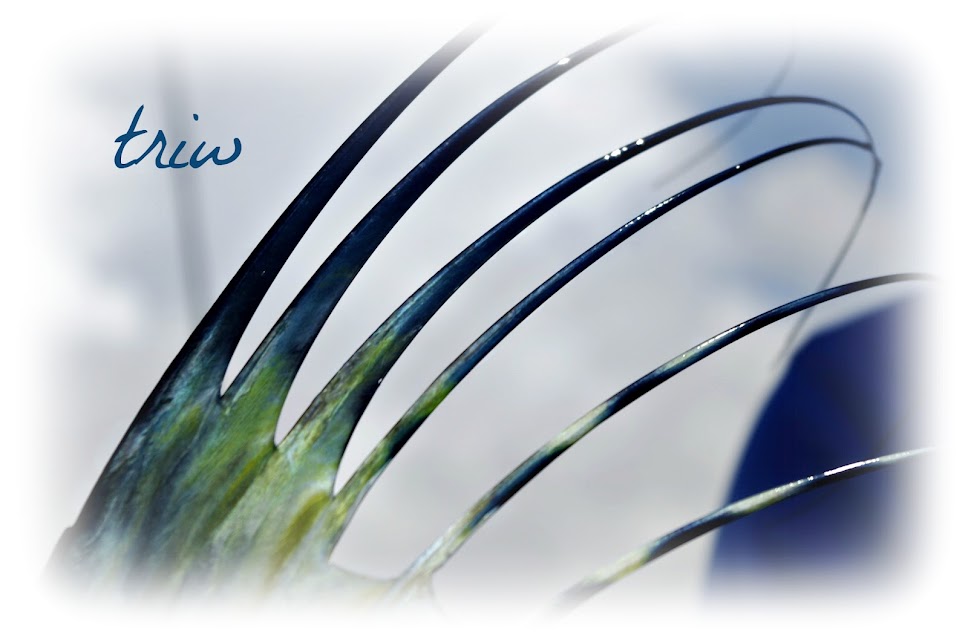Tired and defeated, I turned around on the canal path and began my hike back to the truck. After nearly two miles of walking, I didn’t see a single sign of Cyprinus carpio, but during my hasty retreat I almost missed the only fish of the session: a large common that was slowly cruising in the middle of the water column. I led the fish significantly, landing my damselfly in its path. As the carp approached, its predatory instincts took over as it keyed in on the easy meal. A short while later, I released the twenty-pounder back into its deep-water lair. It was yet another cruising carp that fell victim to a mid-column presentation on fly.
Most conventional carping techniques call for weighted flies that are presented along the bottom to actively feeding carp. The water I frequent is too deep or filled with snags, mud, and weeds that make fishing the bottom almost impossible. On top of that, the fish are too spooky to be properly presented with any weighted fly. In order to achieve any success, my friends and I had to develop new flies and presentations to fool these golden ghosts. Un-weighted flies such as damsel and dragonfly nymphs became standard issue on the still waters in our area. We quickly discovered that carp actively feed not only on the bottom, but also on aquatic invertebrates throughout the water column.
In order to successfully carp in the column, one needs to understand the behavioral characteristics of carp that will take a fly. Certain carp that are on the move need to be avoided. Depending on light conditions, barometric pressure, moon phase, and weather, carp will actively move from one feeding area to another. These fish move with a purpose and will not go out of their way to take a fly. On the other side of the coin are laid-up fish. These fish are stationary, near the surface, and often near some form of structure. Despite their laziness, these fish will take a properly presented fly, but that is a topic for later discussion.
The best behaviors for success come from actively feeding carp. These fish are “mudding” by rooting amongst the bottom for their food, creating a visible mud or bubble trail. After each nosedive, they will ascend in the water column to move to another area. This is when they are most susceptible to a fly angler and when they often reveal themselves in deeper water. However, fish don’t have to be “mudding” in order to be on the feed. Fish that are slowly meandering throughout the water column will eat a fly presented in the middle of the column. These “prowlers” are actively using their senses to find food and this behavior is common in carp inhabiting deeper waters. These two behavioral characteristics are perfect for mid-column presentations on fly.
The most important part about fishing the water column for carp is the presentation of the fly. First, you will need to be at a correct angle that will allow you to present in front of the fish. The angle should be such that if you need to move your fly it will always be moving away from the fish. The same rule applies to all predatory fish. The goal here is to serve up the fly on a platter. The fly will have to intercept the carp at the same water depth. The importance of this is paramount and the leading distance is determined by the depth and speed of the carp. In these situations, it is always better to overshoot your intended target area because you can always drag the fly into place and drop it in the zone. If your cast falls short, you cannot correct your mistake and you will have to recast. If you nail the presentation, the only task remaining is to feed the fish.
Damsel and dragon nymphs exhibit a short darting motion when frightened. Depending on the clarity of the water, carp will be able to see your fly move in the water column up to 10 ft. away. When carp approach the fly, I like to impart a short darting motion, which also send miniscule vibrations in order to make the fly’s presence known. After that, I let the fly free fall to intercept the fish.
When the fish is near the fly, I prefer to keep my eye on the fly and watch it get eaten. In low water conditions, when it may be difficult to track the fly, I like to watch the carp’s lips. When they feed, their mouths will protrude to suck in their food. This is easily seen because brighter cartilage is exposed in the act of vacuuming. Keep in mind that larger carp can suck in prey from larger distances. This moment can often be the most exhilarating aspect of fly-fishing for carp. When it happens, hold on tight and enjoy the ride.
Carping the column is not easy and you will gradually learn from your experiences to become a better angler. Not all carp water is equal and the spring creek fueled ponds and deep canals of my home waters might present entirely different variables than your carping hot spot. Armed with this new knowledge, it might open up new water to be fished and add another important weapon to your growing arsenal.


No comments:
Post a Comment